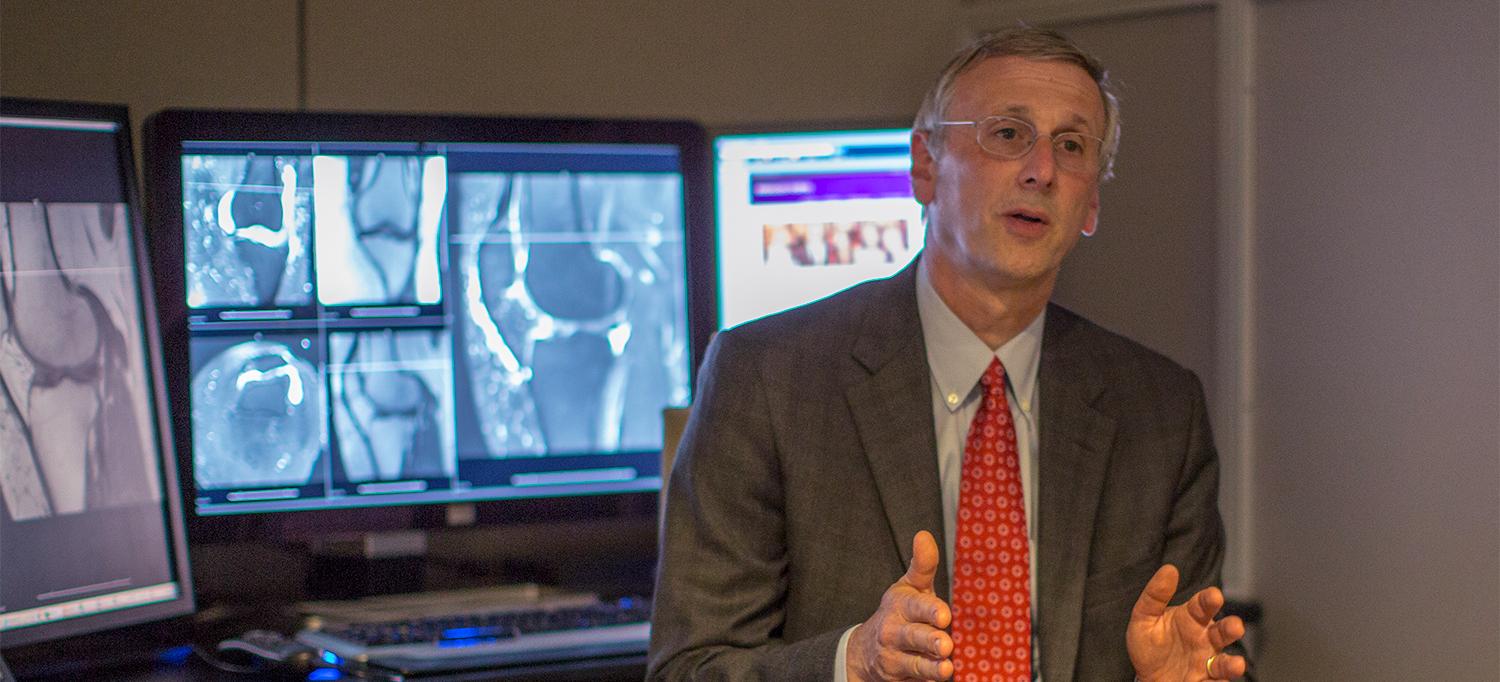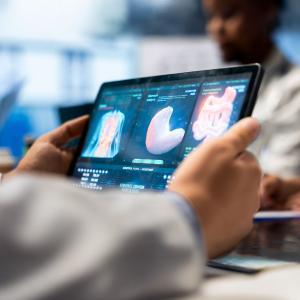
Michael P. Recht, MD
Photo: Joshua Bright
Video radiology reports—created for individual patients using easy-to-understand language and clearly annotated images—can be valuable tools to help patients better understand test results, according to a new study published online April 20 in the American Journal of Roentgenology.
Led by radiologists at NYU Grossman School of Medicine, in collaboration with Visage Imaging GmbH and Siemens Healthineers, the study also found that clinical radiologists could create this additional, patient-focused video in less than four minutes and deliver the video directly to patients and referring providers seamlessly through an integrated patient portal.
“For decades radiologists have provided traditional radiology reports that are full of medical jargon and extremely difficult for patients to understand and decipher,” says the lead author of the study, Michael P. Recht, MD, the Louis Marx Professor of Radiology and chair of the Department of Radiology at NYU Langone Health. “Our findings demonstrate that when radiologists take a more active role in patient-centered care and provide helpful information about a particular diagnosis in an easy-to-comprehend manner, both the patient and clinician benefit.”
VIDEO: An example of a video report for a patient with tarsal coalition that includes a cinematic 3D image.
CREDIT: American Journal of Roentgenology
Study Details
For the study, 105 clinical radiologists at NYU Langone Health created 3,763 video radiology reports over 4 months, between September 2021 and January 2022. The reports consisted of all imaging modalities, including: 1,416 MRIs, 765 mammograms, 607 X-rays, 474 CT scans, 312 ultrasounds, and 189 interventional radiology procedures, from a number of clinical settings, including inpatient (30), emergency department (95), and outpatient (3415).
The average time of the video report was 55 seconds, and of the 3,763 reports created, 864 were viewed at least once. Of the 864 videos opened, 395 of them were viewed more than once—up to 19 times. Patients who received and viewed their video report were sent a 10-question survey to provide an assessment of their experience with the pilot program.
A total of 12 percent of patients responded to the survey and rated both their overall experience and ability to understand their imaging test results an average score of 4.7 out of 5. Of the patients who completed the survey, 91 percent indicated that they preferred having both a written and video radiology report, indicating that the video was helpful at highlighting the most important aspects of the report.
Making Video Reports a Reality
To create the reports, researchers collaborated with Visage Imaging GmbH to build and integrate a video reporting tool inside the picture archiving and communication system (PACS) used by the radiologists to read imaging studies. Given the increasing time restraints radiologists are already under, the tool needed to be easy to use and follow a well-understood paradigm of classic recorders. Once a series of images is identified, the radiologist brings the images into the diagnostic viewer screen and records the content on the screen with audio from the same microphone used to create the traditional “written” radiology report. The radiologist can use a mouse to identify important anatomical structures.
For imaging studies containing cross-sectional images, like CT scans and MRI scans, researchers worked with scientists from Siemens Healthineers to develop a novel technique that automatically creates cinematic rendered (CR) images, which are photorealistic renderings of anatomy. These images were immediately available on the PACS station, so that they could be included in the video report. Once creation of a video report is complete, it is simultaneously uploaded to NYU Langone Health MyChart, its patient portal, with all additional clinical notes and a full written report.
The study found the average time it took a radiologist to create each report was under four minutes. To date, NYU Langone has created over 11,000 video radiology reports, and it continues to identify ways to shorten the time it takes to create each report in an effort to make them available with nearly every imaging test performed.
“Our study disrupts the old adage that radiologists ‘sit in a dark reading room all day’ and are invisible to patients,” says Dr. Recht. “Through projects and research like this, our radiologists take a more active approach to patient-centered care that allows our department to provide exceptional, world-class care.”
In addition to Dr. Recht, other researchers involved with the study are Ankur M. Doshi, MD, Matthew G. Young, DO, Dana Ostrow, and Dawn-Marie Swahn from NYU Langone; Malte Westerhoff of Visage Imagining GmbH; and Sebastian Krueger and Stefan Thesen of Siemens Healthineers.
Media Inquiries
Rob Magyar
Phone: 212-404-3591
robert.magyar@nyulangone.org

